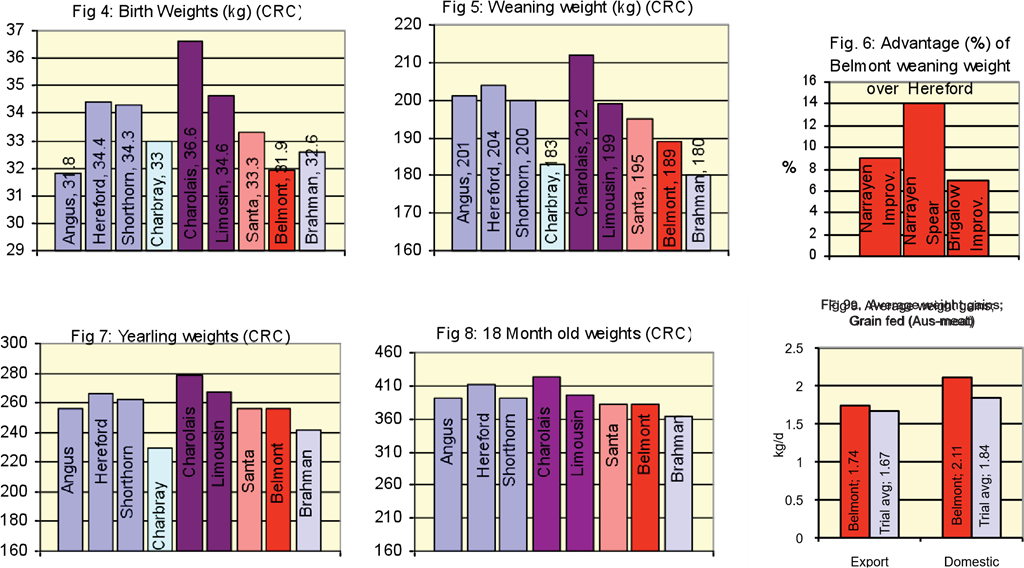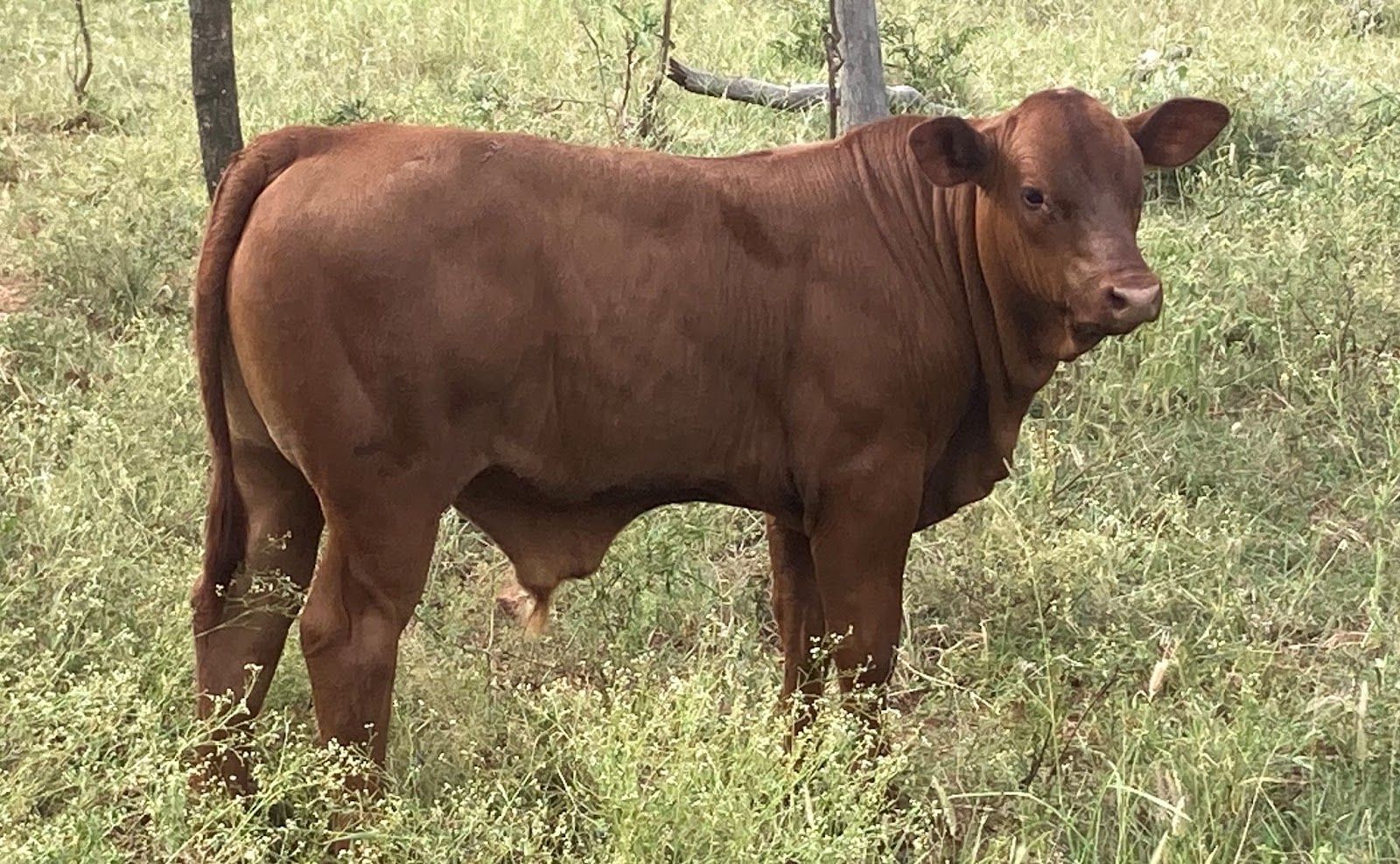Growth
Weights and gains
- Birth weight
“CRC” Fig. 4 Birth weights of Belmont Reds were amongst the lightest of all the breeds, indicating that calving difficulties would be low. - Weaning weight
“Narayen & Brigalow” Fig. 6 illustrates the relative advantage of Belmont Red weaning weights over Herefords on Improved and Native pastures. At ‘Narayen’ Belmonts were 9% and 14% heavier on Improved pastures and Native (Spear grass) pastures respectively, and at ‘Brigalow’ 7% Heavier. The Belmonts advantage was greatest on the poorer quality feed. At “Mt Eugene” weaning weights of calves by Belmonts, Santa Gertrudis and Droughtmaster bulls were similar. - Post weaning
“Aus-Meat trials” Fig. 9a gives the average weight gains from 9 trials held in Queensland & New South Wales, from 1988 – 1995 for grain-fed export and domestic classes. Grass fed export gains were; Belmont Reds 110.6 kg. and trial average 101.3 kg. At “Brigalow” yearling (379 days) weights of Belmont Reds were 13.5% heavier than Herefords.

Cow Weights
“Narayen” cow weights of Belmont Reds and Herefords in October (post calving) and mid April (weaning) on improved pastures were similar. However, on Spear grass, Belmonts were 25kg and 17 kg heavier than Herefords, demonstrating the Belmonts ability to handle poorer quality feed better than the Herefords.
- Experiments showed that when animals were losing weight on poor quality feed, the metabolism of Belmonts and the Brahman-cross were much lower than that of the British resulting in slower weight loss. However, when animals were gaining weight fast on good quality feed, the Belmont and British had higher metabolism than the Brahman-cross resulting in higher weight gains for the Belmont and British animals. In practical terms this means that under drought conditions Belmont Reds and Brahman-cross will survive better than British, but under good conditions (eg. feedlot), Belmonts and British breeds will gain weight faster than Brahman-cross. These experiments explain why the Belmont does well on good pastures and feedlots, yet has drought tolerance similar to Brahman crosses.
- Conclusions on Growth Weights and weight gains of the Belmont Red are comparable and in some cases exceed those of the Brahman infused breeds, and the pure Brahman, especially at market target weights (Figs. 5 & 7). Even in benign sub-tropical environments, Belmont weights have been better than Herefords (Fig.6). They have also performed very well under feedlot conditions (Fig 9a). The low birth weight of the Belmont is an advantage in relation to ease of calving (Fig.4).
